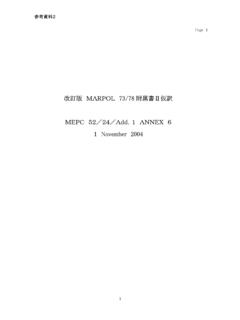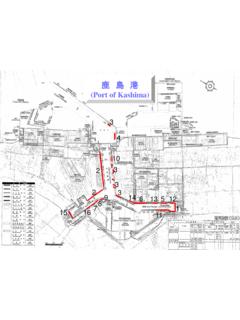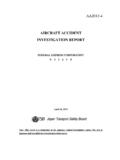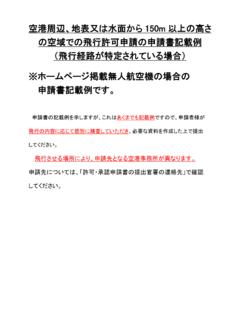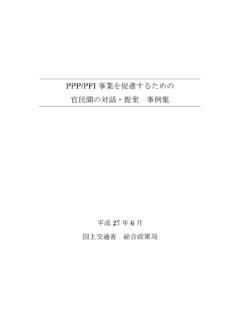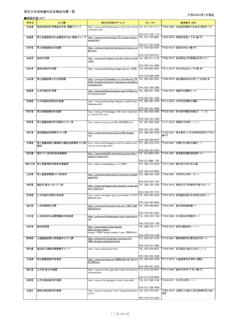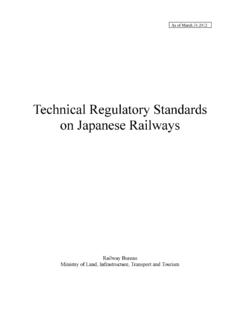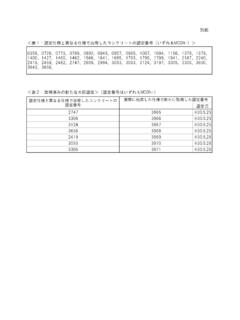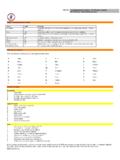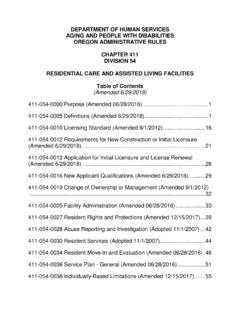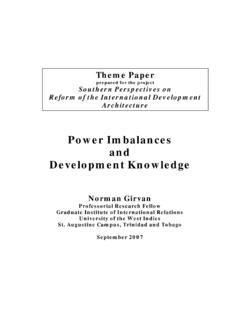Transcription of AIRCRAFT SERIOUS INCIDENT INVESTIGATION …
1 AI2014-4 AIRCRAFT SERIOUS INCIDENT INVESTIGATION report ALL NIPPON AIRWAYS CO., LTD. J A 8 0 4 A September 25, 2014 The objective of the INVESTIGATION conducted by the Japan Transport Safety Board in accordance with the Act for Establishment of the Japan Transport Safety Board (and with Annex 13 to the Convention on International Civil Aviation) is to prevent future accidents and incidents. It is not the purpose of the INVESTIGATION to apportion blame or liability. Norihiro Goto Chairman, Japan Transport Safety Board Note: This report is a translation of the Japanese original INVESTIGATION report . The text in Japanese shall prevail in the interpretation of the report . AIRCRAFT SERIOUS INCIDENT INVESTIGATION report EMERGENCY EVACUATION USING SLIDES ALL NIPPON AIRWAYS CO., LTD. BOEING 787-8, JA804A TAKAMATSU AIRPORT AT 08:49 JST, JANUARY 16, 2013 September 19, 2014 Adopted by the Japan Transport Safety Board Chairman Norihiro Goto Member Shinsuke Endo Member Toshiyuki Ishikawa Member Sadao Tamura Member Yuki Shuto Member Keiji Tanaka SYNOPSIS Summary of the SERIOUS INCIDENT On January 16 (Wednesday), 2013, a Boeing 787-8, operated by All Nippon Airways Co.
2 , LTD., registered JA804A, took off from Yamaguchi Ube Airport for Tokyo international Airport at 08:11 local time as its scheduled flight 692. When it was climbing through 32,000 ft over Shikoku Island, an EICAS message of battery failure came on at 08:27 accompanied by unusual smell in the cockpit. The airplane diverted to Takamatsu Airport and landed there at 08:47. An emergency evacuation was executed using slides on T4 taxiway at 08:49. Four passengers out of 137 occupants (the Captain, seven crewmembers and 129 passengers) suffered minor injuries during the evacuation. Although the main battery was damaged, it did not lead to a fire. Incidentally, a similar INCIDENT had occurred prior to Takamatsu event by nine days in the United States, on January 7, 2013 (Eastern Standard Time) at Logan International Airport, Boston, Massachusetts. About one year after the SERIOUS INCIDENT , another similar main battery INCIDENT occurred at Narita International Airport on January 14, 2014.
3 Probable Causes The emergency evacuation was executed on Takamatsu Airport taxiway in the SERIOUS INCIDENT , which was a consequence of emergency landing deriving from the main battery thermal runaway during the airplane s takeoff climb. Internal heat generation in cell 6 very likely developed into venting, making it the initiating cell, resulting in cell-to-cell propagation and subsequent failure of the main battery. It is very likely that cell 6 internal heat generation and increased internal pressure caused it to swell, melt the surrounding insulation material and contact the brace bar creating a grounding path that allowed high currents to flow through the battery box. The currents generated arcing internal to the battery that contributed to cell-to-cell propagation consequently destroying the battery. Cell 6 heat generation was probably caused by internal short circuit; however, the conclusive mechanism thereof was not identified.
4 In the SERIOUS INCIDENT , the internal short circuit of a cell developed into cell heat generation, thermal propagation to other cells, and consequently damaged the whole battery. The possible contributing factors to the thermal propagation are that the test conducted during the developmental phase did not appropriately simulate the on-board configuration, and the effects of internal short circuit were underestimated. Safety Recommendations 1. Actions to be taken by the Federal Aviation Administration The internal short circuit test by nail penetration method under the simulated on-board configuration with the battery ground wire demonstrated a thermal runaway, while the test without the ground wire did not. Given the facts and analyses of other tests combined, in the SERIOUS INCIDENT the very likely sequence of scenario for the main battery thermal runaway is as follows: Cell 6 was the initiator of the thermal propagation; Cell 6 and the brace bar contacted with each other allowing high currents to flow through the battery box to cause arcing; and Arcing bolstered the thermal propagation leading to the thermal runaway.
5 It is very likely that the engineering test conducted during the developmental phase did not develop into thermal runaway because the battery box was not grounded with the ground wire. This demonstrates that it was inappropriate to exclude the internal short circuit test from the safety assessment based on the test result which was not conducted simulating the actual airplane configuration. There is a possibility that present standards for airplane lithium ion battery do not appropriately address the electric environment although they stipulate environmental conditions such as temperature, humidity, inertia, and so on. In addition, the fault tree analysis in the safety assessment provided to the Japan Transport Safety Board lacks the assessment of the thermal propagation risk. The probability of lithium ion battery thermal event with venting was estimated to be less than 1 out of ten million flight hours in the type certification; however, in reality three events of cell heat generation have occurred in less than 250,000 flight hours, resulting in the rate far exceeding the estimate.
6 The calculation of failure rate in the type certification, which was done based on the failure records of similar LIB, was probably inappropriate. In addition, contactor opening not expected in the design is very likely associated with cell venting; therefore, the necessity for risk reassessment on the loss of all electric power should be examined. The Japan Transport Safety Board, in light of the SERIOUS INCIDENT INVESTIGATION , makes the following safety recommendations that the Federal Aviation Administration of the United States of America should take the following mitigation actions. The FAA should: a. Provide instruction to airplane manufactures and equipment manufactures to perform equipment tests simulating actual flight operations. b. Review the technical standards for lithium ion battery to ensure that the electric environment is appropriately simulated, and if necessary, amend the standards.
7 C. Review the lithium ion battery failure rate estimated during the 787 type certification, and if necessary, based on its result, review the lithium ion battery safety assessment. d. Review the type certificate for its appropriateness on heat propagation risk. e. Assess the impact of contactor opening after the cell vent on the flight operation and take appropriate actions, if necessary. 2. Measures to Be Taken to Instruct The Boeing Company as a Designer and Manufacturer of the 787 Although this INVESTIGATION could not conclusively identify the mechanism of the internal short circuit, low temperature during overnight stay possibly contributed to the internal short circuit as the three battery incidents (this SERIOUS INCIDENT inclusive) occurred in the midst of cold January and low temperature is said to be favorable for lithium metal deposition. In addition, there are reports of cell contamination deriving from manufacturing, which may be related to the cause of the battery event.
8 Furthermore, this INVESTIGATION found the unexpected battery charger unit operation and contactor opening which are outside the design envelope in relation to the charging control. In light of these facts, the Federal Aviation Administration should supervise Boeing to: a. Continue the study of internal short circuit mechanism considering the effects of non-uniform winding formation and other factors deriving from manufacturing process; and continue efforts to improve lithium ion battery quality and its reliability, reviewing the LIB operational conditions, such as temperature. b. Improve BCU and contactor operations which are outside the design envelop. The following abbreviations and unit conversions are used in this report . Abbreviations AC: Advisory Circular AD: Airworthiness Directive Ah: Amp hour ANA: All Nippon Airways AOM: Airplane Operations Manual APSIF: Airplane Power Systems Integration Facility APU: Auxiliary Power Unit ASG: APU Starter Generator ATC: Air Traffic Control ATP: Acceptance Test Procedure ATCC: Air Traffic Control Center BCU: Battery Charger Unit BDM: Battery Diode Module BIT: Built-in Test BMU: Battery Monitoring Unit BPCU: Bus Power Control Unit CA: Cabin Attendant CC: Constant Current CFR: Code of Federal Regulations CG: Center of Gravity CP: Certification Plan CP: Chief Purser CRN: Current Return Network CT: Computed Tomography CV: Constant Voltage CVR: Cockpit Voice Recorder DC: Direct Current DME: Distance Measuring Equipment DPA: Destructive Physical Analysis EAFR: Enhanced Airborne Flight Recorder EE: Electronic Equipment EICAS: Engine Indicating and Crew Alerting System EPS.
9 Electrical Power System FAA: Federal Aviation Administration FCE: Flight Control Electronics FDR: Flight Data Recorder FHA: Functional Hazard Assessment FL: Flight Level FMEA: Failure Modes and Effects Analysis FO: First Officer FOD: Foreign Object Damage fpm: feet per minute FTA: Fault Tree Analysis GCU: Generator Control Unit HBB: Hot Battery Bus HECS: Hall Effect Current Sensor ILS: Instrument Landing System IP: Issue Paper JAXA: Japan Aerospace Exploration Agency JCAB: Civil Aviation Bureau of Japan JTSB: Japan Transport Safety Board JIS: Japanese Industrial Standards LIB: Lithium Ion Battery MAC: Mean Aerodynamic Chord MFD: Multi-Function Display MLG: Main Landing Gear MOPS: Minimum Operational Performance Standard MTBF: Mean Time Between Failure(s) NLG: Nose Landing Gear NTSB: National Transportation Safety Board OCV: Open Circuit Voltage ODA: Organization Designation Authorization PF: Pilot Flying PM: Pilot Monitoring RAT: Ram Air Turbine RCCA: Root Cause Corrective Actions RIPS: Recorder Independent Power Supply RNAV: Area Navigation RTCA: Radio Technical Commission for Aeronautics SC: Special Condition SEI: Solid Electrolyte Interface SEM : Scanning Electron Microscopy S/N : Serial Number SOC: State Of Charge TC: Type Certificate TIG: Tungsten Inert Gas TSO: Technical Standard Order TWR: Tower UTC: Universal Time Coordinated VDC: Volt DC VHF: Very High Frequency VOR: VHF Omni-directional Ranging VSGS: Variable Frequency Starter Generator Unit Conversion 1 foot (ft) : meters 1 knot (kt): meters per second ( kilometers per hour) 1 nautical mile (nm): 1,852 meters 1 pound (lb): kilograms i Table of Contents 1.
10 PROCESS AND PROGRESS OF THE SERIOUS INCIDENT INVESTIGATION .. 1 Summary of the SERIOUS INCIDENT 1 Outline of the SERIOUS INCIDENT INVESTIGATION 1 INVESTIGATION Organization 1 Representatives from Relevant States 1 Implementation of the INVESTIGATION 1 Comments from the Parties Relevant to the Cause of the SERIOUS INCIDENT 2 Comments from the Relevant States 2 2. FACTUAL INFORMATION .. 3 History of the Flight 3 History of Fight Based on Flight Recorder Data and ATC Communication Data 3 Statements of Crewmembers 6 Injuries to Persons 8 Damage to the Airplane 9 Extent of Damage 9 Damage to the Airplane Components 9 Personnel Information 9 Airplane Information
